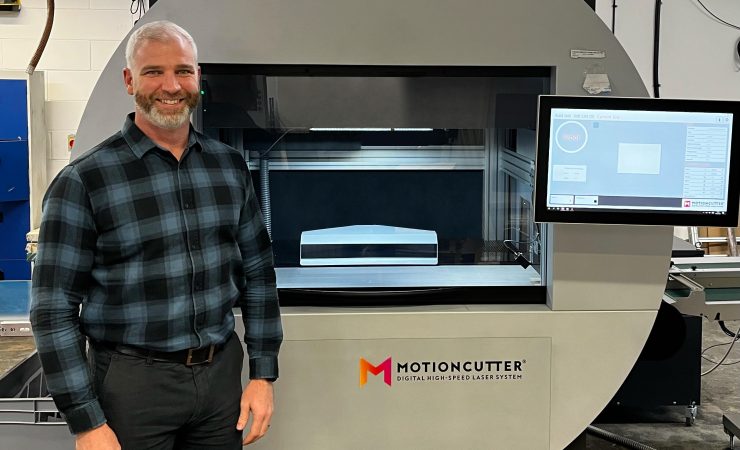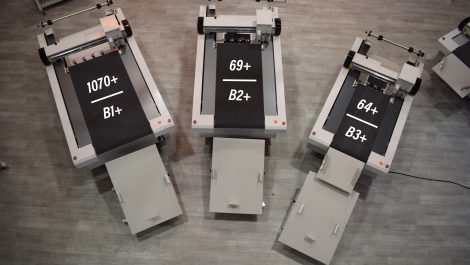Solopress has become the first UK customer to install a Motioncutter digital laser cutter supplied by Konica Minolta. Installed in December 2021, the Motioncutter 23 will be used to improve flexibility and productivity in the production of stickers and labels, while reducing material waste and stock holding requirements.
The Southend-on-Sea trade and B2B printer had been producing around £1 million a year using pre-kiss-cut label stock, but the fixed sizes limited production flexibility and the company’s ability to react quickly to market demands. Coupled with an increase in demand, Solopress was looking to invest in a laser cutter that would enable bespoke shapes and sizes to be supported.
Managing director Simon Cooper commented, ‘Having seen the impressive results and the potential for big material cost savings, we felt the Motioncutter 23 was a no-brainer for us. We estimate that the capex costs of the machine will be offset within just 18 months, whilst the operational benefits will be realised right away. Having had a productive year in 2021 we were keen to invest this back into the business right away, so we were delighted that Konica Minolta was able to deliver on its promises so quickly.’
In addition to full and kiss-cutting, the Motioncutter 23 is able to engrave, perforate and crease in a single pass at speeds of up to 45m/min. Its arrival has simplified stock management at Solopress as well as enabling the production of practically shape or size of bespoke label or sticker on coated, uncoated papers and clear or white polypropylene.
Grahame Megilley, industrial print business development manager at Konica Minolta Business Solutions (UK) added, ‘Solopress can supply high quality labels/stickers to a broad range of customers, from printers and resellers to graphic design businesses and (significantly) smaller micro-businesses and home-based businesses that produce very bespoke individual products that require short runs of labels/stickers – something which is often lacking in the market but in high demand post-pandemic.’





